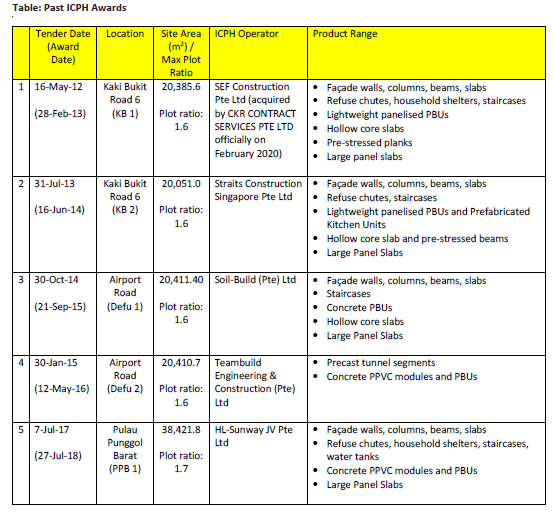Posted on 15 Apr 2024
SEAISI Plant Tour #2
On 22 November 2023, a plant tour was organised in conjunction with the 2023 SEAISI Sustainability & Construction Forum. The plant tour took us to HL-Sunway Prefab Hub, the latest and largest Integrated Prefabrication Hub (“ICPH”) in Singapore.
About the HL-Sunway Prefab Hub
HL-Sunway Prefab Hub was set up by a joint venture between Hong Leong Asia Ltd (“HLA”) and Sunway Construction Group Berhad (“SunCon”). The Hub started operating since November 2022 and was officially opened on 21 July 2023.
Built on reclaimed land, the 3.8-hectare precast manufacturing facility is installed with state-of-the-art technology to produce a wide range of building components including Prefabricated Prefinished Volumetric Construction (“PPVC”) components, Precast Bathroom Units, Precast Household Shelters as well as Large Panel Slabs under one roof. The production of precast components locally in Singapore will further improve the precast supply chain resiliency of the built environment sector.
The investment was made in alignment with Singapore’s strategy to ensure sustainable supply of building components for the housing market in Singapore.
Government Push for ICPH
In pursuit of further construction productivity, the Singapore built environment sector is increasingly using precast and prefabricated building components.
To build up the local supply of such components, a masterplan was formulated for the development of the ICPHs with 30-year lease terms.
ICPHs refer to multi-storey advanced manufacturing facilities, with a high degree of mechanisation and/or automation, which produce:
According to BCA, ICPHs brings the following benefits to the Construction Industry:
Despite all these advantages, ICPHs are very expensive to build and operate, not to mention the scarcity of land in Singapore.
ICPH vs Traditional Precasting
Traditional precasting is done in a single storey factory within a huge piece of land, where much of the space is needed to store completed precast components, allowing these to “cure” or dry up after precasting.
Over the last decade, many Singapore precast operations have shifted to Johor Bahru, Malaysia due to operational costs as well as scarcity of land. Completed precast components are then trucked to Singapore across the Second Link.
With cheap land, energy and labour costs, there was no way ICPHs can compete with the traditional precasting set up, especially in Johor Bahru.
Material Security in Singapore
In mid-March 2020, when Malaysia locked down the country and barred citizens from travelling abroad as foreign arrivals due to COVID19. This had affected manpower and stalled shipments of prefab construction parts into Singapore. At that time, the Building and Construction Authority (BCA) expected “a total of 44 Prefabricated Prefinished Volumetric Construction (PPVC) projects, of which 35 are private residential and HDB projects, at various stages of progress” will likely suffer delays because of Malaysia’s two-week lockdown.
The two reasons why Malaysia’s lockdown brought the construction of many condos and Housing Development Board’s (HDB) Build-to-Order (BTO) projects to a standstill:
By June 2021, even after Singapore had overcome the outbreak in the workers dormitories and was, Malaysia implemented a full movement order. This continued to disrupt the inflow of precast components used in the HDB’s BTO projects.
By end of 2021, 90% of HDB’s BTO projects were delayed. Flat owners for the first completed project after COVID19 waited over 2 years to get their keys. In January 2023, the figure had dropped to 40% and HDB said it expected to clear the backlog by 2025.
Without security in materials supply, the Singapore construction had been badly affected by external factors.
Since then, in the future government tenders for the Singapore government has required 50% of the PPVC to be from local supply, which means ICPH now have become viable projects.
Without security in materials supply, the Singapore construction had been badly affected by external factors. Since then, in the future government tenders for the Singapore government has required 50% of the PPVC to be from local supply, which means ICPH now have become viable projects.
Operations Require Capabilities
There are many challenges building the ICPH, as experienced by the HL-Sunway Prefab Hub leadership team, including technology selection, operations set up and ramping up production.
Of the three, what was interesting was the last point. Ramping up production was challenging because there was a lack of operations management capability in Singapore. This came about from the shift of precasting manufacturing to Johor Bahru. Capability in operations management also shifted offshore.
With this issue there was a need to bring back talent from abroad and to re-train the available resources in Singapore to be able to handle the production of PPVC.
The key point here is once the manufacturing capabilities were relocated overseas, the relevant talent and capabilities were also relocated.
Learning Points
There is so much one can learn from a plant tour. For this plant tour, the key learning points that are:
This is why it is necessary to have local supply such as having a local steel and construction materials industry in the country. Another alternative is also to diversify supply sources, though such strategy would not work in a scenario like COVID.
SEAISI would like to thank Mr. Vincent Ang from HL-Sunway Prefab Hub for allowing our delegates to visit the largest and latest ICPH in Singapore, where there were so much insights and learnings.
Stay Healthy. Stay Safe.
See You at SEAISI Events.

Source: Building and Construction Authority Singapore (https://www1.bca.gov.sg/buildsg/productivity/design-for-manufacturing-and-assembly-dfma/integrated-construction-and-prefabrication-hub-icph)
Source:SEAISI